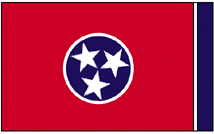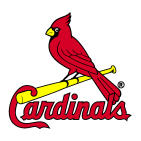[« "Why we fight" the Bolton Nomination.....] [Baseball trivia of the day.... »]
05/02/2005: Karen's Chicago Trivia Q Answers
Well, next time, I promise it'll be at least a multiple choice style (favored by some folks) for the Trivia Q's...as this was *toooo hard* for everyone to come up with any answers to these questions.
Click on the "more" button for the answers to this week's Trivia.
1) What were the original two names of Chicago’s Midway Airport?
Maywood Field was the original airstrip built for use by the US Postal service in its Contract Air Mail routes. It was rebuilt and named the Chicago Municipal Airport in 1927.
2) What year was this airport rebuilt and then renamed?
Rebuilt from Maywood field in 1927 , the name changed to Chicago Municipal Airport. Then changed its name again to Midway Airport in 1949 to commemorate the famous battle of the Pacific. It earned the “world’s busiest airport’ designation in 1932.
3) Bonus Q: What year did O’Hare open?
1955
4) What was the name of the necropolis which was moved from the North Avenue Beach area starting in approx. 1856 –1858.
This was the location of the “City Cemetary” and smaller “Catholic Cemetary” which were abandoned along with the 12 additional acres purchased from the estate of Mr. Jacob Milleman.
5) Why did this “move” even occur? Who was responsible for it?
These bodies were moved on the advice and actions of the Chicago Sanitary Supervisor, John Rauch, as a hazard to the public health and water supply.
City Cemetary occupants went to Graceland, Oakwoods, Rosehill and Wunder’s cemeteries. The Catholics went to Calvary in Evanston and St. Boniface in Chicago. Jewish graves were relocated to Belmont and Clark in 1856.
6) What do the letters for the Station “WGN” stand for and what year did they begin broadcasting?
“World’s Greatest Newspaper” so named after its Chicago Tribune founding entity by Robert R McCormick who called his news organization by that moniker.
Began broadcasting as WGN radio in 1924 and WGN television in 1948.
7) On Lake Calumet was some four thousand acres of land that became known as what area of Chicago and was later (1889) annexed into Hyde Park? (Approximately between 11115th Street and 11111th Street)
The Town of Pullman, built by George Pullman on this four thousands acres as the manufacturing center for his Pullman Palace Car Company. The architecture, designed by Solon Spencer Beman, was built out of cream colored bricks made from the clay dredged up from the bottom of Lake Calumet and was heralded as “marvel of phenomenal enterprises.”
The town had beautiful homes, parks, gardens, a church, theater, a school, library, livery stable, dairy farm, sewerage farm, a shopping center and The Hotel Florence (named for Pullman’s daughter.) But no saloons, drinking resorts or brothels were allowed.
8) This area was believed to be patterned after which existing experimental European City?
a) *Saltaire, France, was the experimental model city which was used for this layout and vision of Pullman.
b) Guise, France.
c) Essen, Germany
9) What was Chicago’s first newspaper? Who founded this paper and in what year?
The Chicago Weekly Democrat, founded by John Calhoun in 1833. It was bought by politician “Long John’ Wentworth in 1836 and became a daily paper in 1840.
10) Who were the three main founders (out of nine original financial supporters) of Northwestern University?
All the nine founders of Northwestern University were Methodists who wished to set up a secular university, most notably:
John Evans (Real estate speculator)
Orington Hunt (Commodities broker)
Grant Goodrich (Attorney)
The other six founders were two lawyers, the owner of a hardware store, and the three leading ministers of Methodist churches in the city.
11) What year was Northwestern’s first class held?
1855
12) What was the most popular exhibit NEXT to (but not a part of) the World’s Columbian Exposition of 1893?
William F. (Buffalo Bill) Cody’s Wild West Show was a sell out success, which had been refused a permit to locate and be part of the actual Exposition as too earthy and low-brow (to their regret over the lost revenue and it’s immense popularity.)
13) What was the most popular exhibit on this Exposition’s Midway Plaisance?
The Ferris Wheel invented by George Washington Ferris. The entire wheel was moved to N. Clark street until 1904 and then to St Louis at the Louisiana Purchase Exposition.
14) What was the “hit song” of the 1893 Exposition?
The Ferris Wheel also reserved an entire car (each car could seat forty guests) for a band that played the Exposition hit song “After the Ball Is Over.”
15) What was the only structure to survived the Great Chicago Fire of October 9th, 1871?
The Chicago Water Tower (located on North Michigan Avenue along the “Magnificent Mile”) was the only totally intact structure to survive the fire. This fire destroyed a densely packed urban area of approx four miles long and two-thirds of a mile wide. The devastation was more than $200 million dollars. The castellated Water Tower, built of stone, became a symbol of the will to rebuild the city and still stands as a historic landmark. (Just up the street from Northwestern University School of Law…which Len *must* have passed by innumerable times during his tenure in Chicago. LOL)
Karen on 05.02.05 @ 01:41 PM CST







